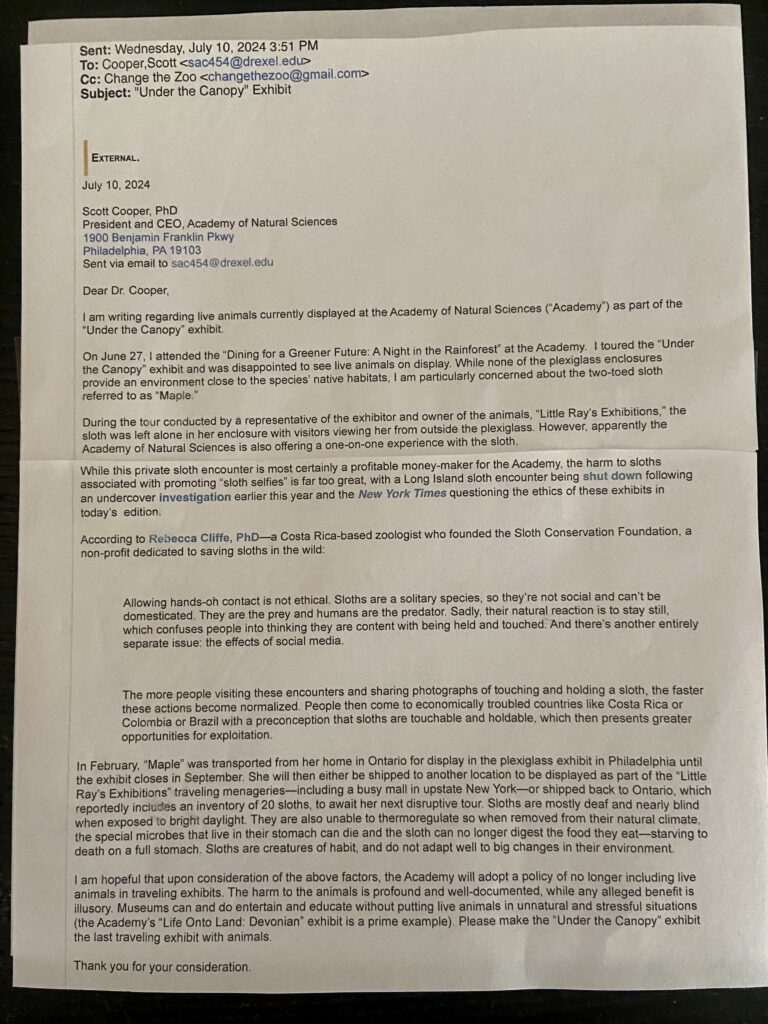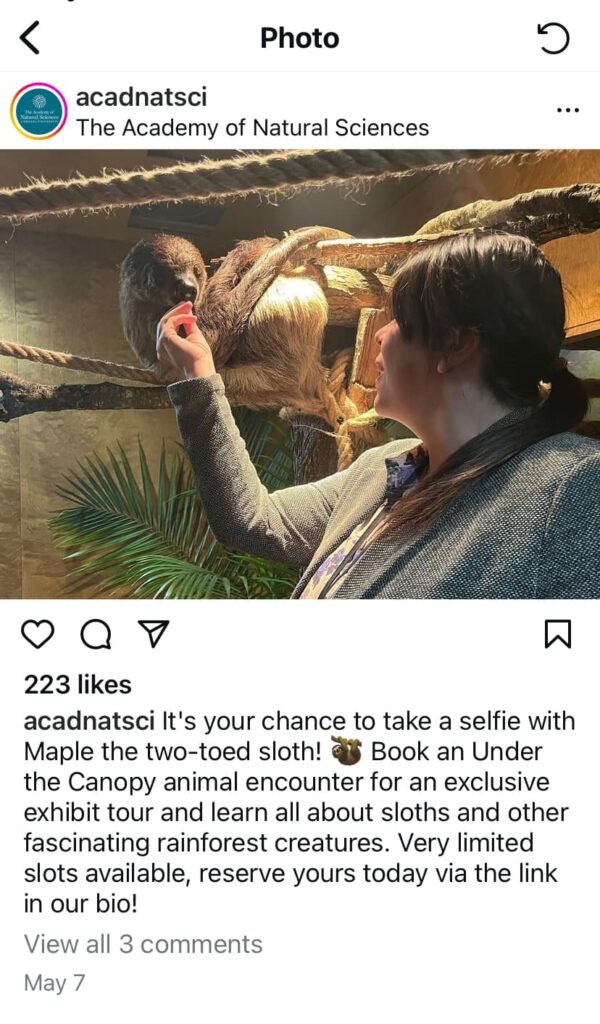The Academy of Natural Sciences in Philadelphia is currently renting a traveling menagerie of animals called “Under the Canopy” from “Little Ray’s Exhibitions,” a for-profit company based in Ottawa, Ontario. Little Ray’s also has a storefront location in Syracuse, NY at the Destiny Mall, where for just $50, paying customers can schedule a 30 minute “private encounter” with a sloth, fennec fox, or tamandua. Among other things, the private encounter allows customers to “meet, feed, and take photos of <the animals>!”
The “Under the Canopy” exhibit at the Academy of Natural Sciences includes a variety of live animals displayed in plexiglass enclosures, including boa constrictors, turtles, and a sloth. While none of the plexiglass enclosures provide an environment close to the species’ native habitats, of particular concern is the two-toed sloth referred to as “Maple.”
We wrote to the Academy on July 10, 2024, expressing our concerns.

Read the Academy’s July 18, 2024 response here (click again to enlarge): https://www.changethezoo.com/wp-content/uploads/2024/08/IMG_5330-scaled.jpg
We responded on July 25, 2024 (click again to enlarge): https://www.changethezoo.com/wp-content/uploads/2024/08/IMG_5332-1-scaled.jpg Link to the video referenced in the letter showing a sloth being held and “snuggled” by a member of the public at “Little Ray’s Exhibitions” – https://www.youtube.com/watch?app=desktop&v=3tFN8hDkx2I
Final response (so far) from the Academy – July 26, 2024 here: https://www.changethezoo.com/wp-content/uploads/2024/08/IMG_5333-scaled.jpg
The harm caused by the promotion of “Sloth Selfies” is well documented.
According to Rebecca Cliffe, PhD—a Costa Rica-based zoologist who founded the Sloth Conservation Foundation, a non-profit dedicated to saving sloths in the wild:
“Allowing hands-on contact is not ethical. Sloths are a solitary species, so they’re not social and can’t be domesticated. They are the prey and humans are the predator. Sadly, their natural reaction is to stay still, which confuses people into thinking they are content with being held and touched. And there’s another entirely separate issue: the effects of social media.
The more people visiting these encounters and sharing photographs of touching and holding a sloth, the faster these actions become normalized. People then come to economically troubled countries like Costa Rica or Colombia or Brazil with a preconception that sloths are touchable and holdable, which then presents greater opportunities for exploitation.”
